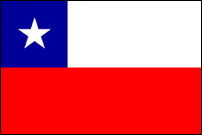|
Santiago, Chile
Santiago, also known as Santiago de Chile, is the capital and largest city of Chile. It is also the center of its largest conurbation. Santiago is located in the country's central valley, at an elevation of 520 m (1,706 ft) above mean sea level. Population: 5.128 million (2014)
Founded in 1541, Santiago has been the capital city of Chile since colonial times. The city has a downtown core of 19th century neoclassical architecture and winding side-streets, dotted by art deco, neo-gothic, and other styles. Santiago's cityscape is shaped by several stand-alone hills and the fast-flowing Mapocho River, lined by parks such as Parque Forestal. The Andes Mountains can be seen from most points in the city. These mountains contribute to a considerable smog problem, particularly during winter. The city outskirts are surrounded by vineyards and Santiago is within a few hours of both the mountains and the Pacific Ocean.
Santiago's steady economic growth over the past few decades has transformed it into a modern metropolis. The city is now home to a growing theater and restaurant scene, extensive suburban development, dozens of shopping centers, and a rising skyline, including the tallest building in Latin America, the Gran Torre Santiago. It includes several major universities, and has developed a modern transportation infrastructure, including a free flow toll-based, partly underground urban freeway system and the Metro de Santiago, South America's most extensive subway system. Santiago is the cultural, political and financial center of Chile and is home to the regional headquarters of many multinational corporations. The Chilean executive and judicial powers are located in Santiago, but Congress meets in nearby Valparaíso.
Santiago is named after the biblical figure St. James. |
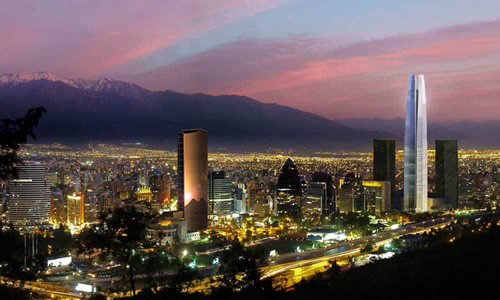
Santiago Skyline |
|
Plaza de Armes
The Plaza de Armas is the main square of Santiago, the capital of Chile. It is the centerpiece of the initial layout of Santiago, which has a square grid pattern. This urban design was accomplished by Pedro de Gamboa, which was appointed by Pedro de Valdivia in 1541.
Surrounding the square are some historic buildings, including the Metropolitan Cathedral of Santiago, Central Post Office Building, Palacio de la Real Audiencia de Santiago, and the building that serves as the seat of local government for Santiago, which was formerly occupied by the Cabildo of the city before being remodeled. |
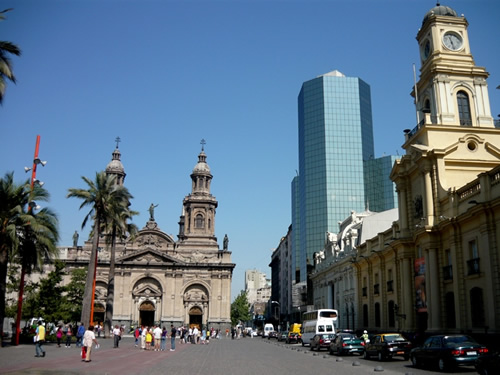
|
|
Metropolitan Cathedral
The Metropolitan Cathedral of Santiago (Spanish: Catedral Metropolitana de Santiago) is the seat of the Archbishop of Santiago de Chile, currently Ricardo Ezzati Andrello, and the center of the archdiocese of Santiago de Chile. Construction of the neoclassical cathedral began in 1748 and ended in 1800; further alterations ordered at the end of the 19th century give it its present appearance.[1] Previous cathedrals in the archdiocese had been destroyed by earthquakes.
The cathedral, located in the city's historic center, faces Santiago's Plaza de Armas and stands near the Palacio Arzobispal de Santiago, the administrative center for the archdiocese. The cathedral is also close to the Parroquia El Sagrario, a Catholic temple and a Chilean national monument. |
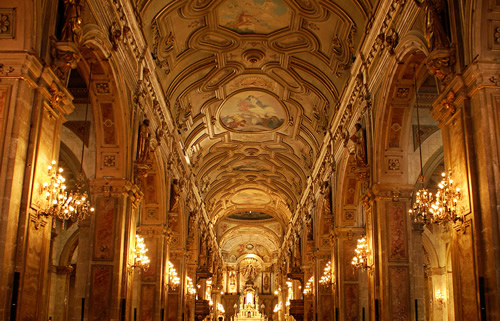
|
|
Museum of Natural History
The Chilean National Museum of Natural History (Spanish: Museo Nacional de Historia Natural or MNHN) is one of three national museums in Chile, along with the Museum of Fine Arts and the National History Museum. It is located in Quinta Normal Park.
The museum is one of the oldest natural history museums in South America. It was founded on September 14, 1830 by the French naturalist Claudio Gay, commissioned by the Chilean government. Its original mandate was the biology and geography of Chile, with a concentration on crops and mineral resources.
In 1889 departments of botany, zoology, and mineralogy were established. The National Museum Bulletin (Boletín del Museo Nacional) was first published in 1908, and continues today under the title Bulletin of the National Museum of Natural History (Boletín del Museo Nacional de Historia Natural).
Earthquakes in August 1906 and April 1927 have damaged the museum. |
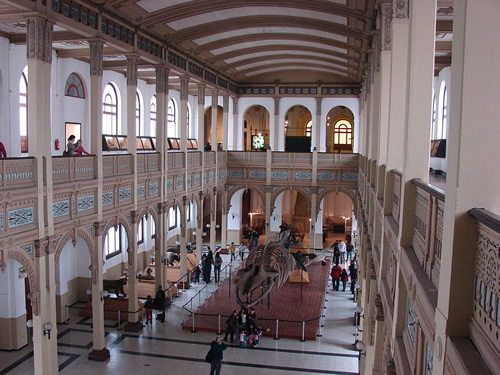
|
|
Casa Colorado
Casa Colorada (English: Red House) is a colonial house built located in Santiago, Chile. It was built in 1769,[1] by Joseph de la Vega for Mateo de Toro y Zambrano, and currently houses the Museo de Santiago (English: Museum of Santiago). The house has a clay-tiled roof, balconied windows, and deep-red walls, and consists of two storeys.
Visitors walk through the homes two large patios to get the Museo de Santiago, which occupies five of Casa Colorada's rooms. The museum explores Santiago's history from the Pre-Columbian era to contemporary times. |
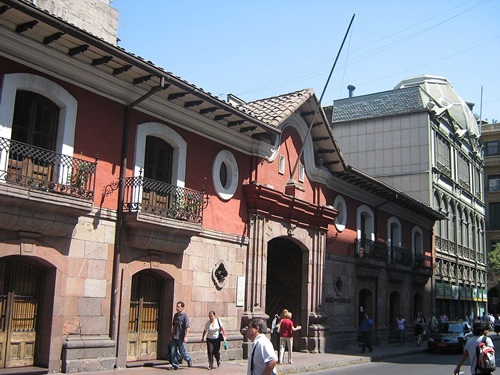
|
|
Gran Torre Santiago
The Costanera Center Torre 2, better known as Gran Torre Santiago (Great Santiago Tower), and previously known as Torre Gran Costanera, is a 64-story tall skyscraper in Santiago, Chile, the tallest in Latin America. It is the second-tallest building by highest architectural feature (behind Q1 in Australia) and by highest occupied floor (after Australia's Eureka Tower) in the Southern Hemisphere. It was designed by Argentine architect César Pelli.
Gran Torre Santiago is part of the Costanera Center complex, which includes the largest shopping mall in Latin America, two hotels and two additional office towers. Gran Torre Santiago is 300 metres (980 ft) tall and 64 stories high plus 6 basement floors, with a floor pitch of 4.1 metres (13 ft) and 107.125 m2 in area.
The tower has nearly 700,000 square meters of building space available built on 47,000 square meters of land. Planners estimated that there would be some 240,000 people going to and from the site each day.[9] The tower was designed by the Argentine architect Cesar Pelli of Pelli Clarke Pelli Architects, Chilean architects Alemparte Barreda & Asociados, and by the Canadian company Watt International. Structural engineering is performed by the Chilean company René Lagos y Asociados Ing. Civiles Ltda. Salfa Corp. was responsible for its construction. |
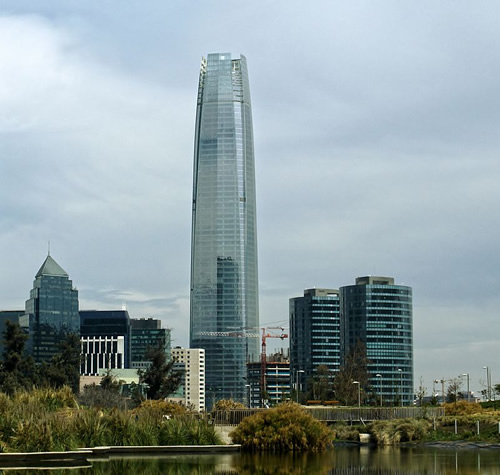
|
|
The Alonso de Cordova Avenue
The Alonso de Cordova Avenue is a road artery of Santiago of Chile, walking suroriente to norponiente the communes of Las Condes and Vitacura, with two - way traffic.
It is divided into two sections: the first one born in the Apoquindo avenue as a continuation of the Fourth Centenary , and crosses the municipality of Las Condes to its limit with Vitacura , the link Kennedy with Vespucio , with 1.8 kilometers long . The second, of 1.4 kilometers, crossing Vitacura from Vespucio to Bicentennial Avenue, next to the park of the same name . For vehicles traveling from Las Condes Vitacura is impossible to make a direct trip by Alonso de Cordova, since the link with Vespucio Kennedy artery is discontinued and only you can follow Kennedy; those who make the journey in the opposite direction, however, have a comfortable detour through Vespucio and the local way of Kennedy, which allows them to resume Alonso de Córdova up to the Hyatt Hotel.
In this section there are boutiques as Armani and Salvatore Ferragamo , while the Las Condes is a sector with good restaurants. |
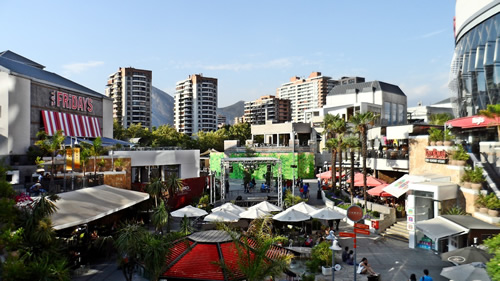
|
|
La Vega Central Market
La Vega Central is Santiago’s main market it’s bustling, noisy and crowded, especially in the mornings or on the weekend, La Vega is, in a word, chaotic. Vendors may aggressively compete for your business or shoo you away if you don’t want to buy quickly and in bulk (they sell by the kilo here). That said, it may be both an exciting but intimidating experience for a foreigner. Come prepared for an true mercado (market) experience that will be a memorable part of your stay in Santiago.
La Vega is enormous and it’s easy to get lost among the many stalls. Keep an eye on your travel companions. For a tamer market experience, head to Mercado de Abastos Tirso de Molina first, on Calle Santa María, which is at the western edge of Parque Forestal and across the street from Mercado Central (Santiago’s most famous fish market). The closest Metro stop to the Mercado de Abastos Tirso del Molina is Cal y Canto (yellow line). Get off the Metro, or take a break from your walking tour, and walk across the bridge that crosses the Mapuche River, which is typically lined with vendors, across the street you’ll find the entrance. Here, shopping will be a bit more tranquil. Upstairs you’ll find clothing stores and restaurants and downstairs, produce, eggs, cheeses, juices, candy and dry goods. |
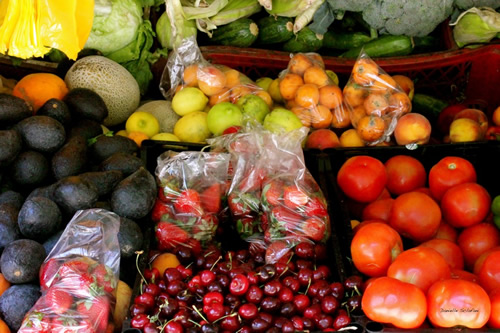
|
|

